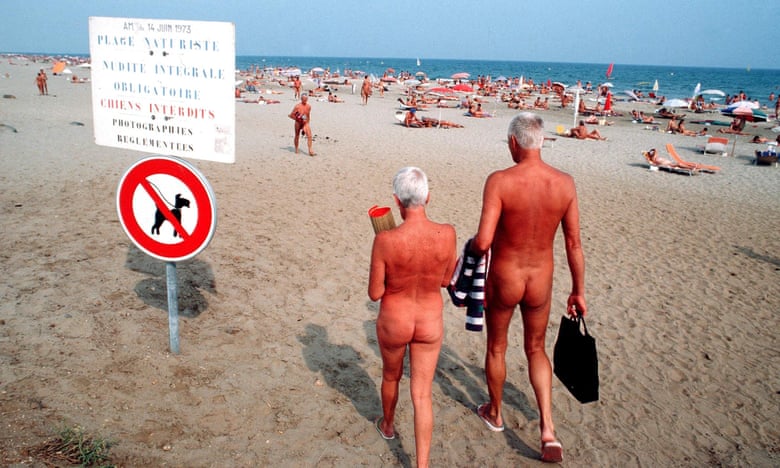 |
| Cap d’Agde boasts a bank, a post office, hairdressers, fishmongers, opticians and several supermarkets |
The entry procedure is a bit unforgiving, but beyond is something unique: a fully functioning town with largely naked citizenry, which grows to 40,000 in the summer. Only a day later, I’m happily part of a nude queue in the deli lining up for tabouli and octopus salad, while a hardbodied gay couple pore over a side of beef. Since the 1990s, Cap d’Agde has gained a lurid reputation as a meat market par excellence. Europe’s libertines and swingers flock here to participate in what Michel Houellebecq envisioned in his book Atomised as the perfect “sexual social democracy”. But every facet of ordinary city life is here, too: a bank, a post office, several supermarkets, concrete arcades lined with hairdressers, fishmongers, opticians and clothes boutiques. Throughout, fully dressed staff (a formality that apparently developed of its own accord) cater, with surreal nonchalance, to the great unclothed.
Cap d’Agde’s naturist retreat, though, is urban by conception. There had been a small nudist campsite here since 1958, but in the mid-1960s, the De Gaulle-instigated Mission Racine to develop Languedoc-Roussillon’s tourist economy created six modernist seaside resorts from scratch, each a day’s boat ride apart – still one of the largest state-run development schemes ever.
Originally, there were no plans to incorporate naturism, but someone changed their mind. No one knows exactly why, but there was some ideological overlap between the purifying doctrines of naturism and modernism: Le Corbusier himself enjoyed airing his bits on the Cote d’Azur and shared the same teacher as Cap d’Agde’s chief architect, Jean le Couteur. The Oltra brothers, who owned the original campsite, helped shepherd plans for a purpose-built naturist village, which began to rise out of the local marshes in the early 1970s.
“The village didn’t develop like that, all alone, in a corner,” says Christian Bèzes, director of Cap d’Agde’s tourist office. “It was integrated as part of a whole with the same principles of architectural unity, prioritising pedestrians and proximity to the sea.”
Maximising exposure to the elements was a particular requirement in the naturist quarter, something I appreciate as I squat like a baboon and sip water in the dry gardens of Héliopolis, the brutalist, amphitheatrical sun-trap next to the beach. Nothing here is higher than four storeys, so shadows do not impinge. Everything in Cap d’Agde, in Le Couteur’s eyes, had to serve a functional human purpose. “Architectural isn’t essential, it is ephemeral. It is urbanism that will last,” he said.
 |
| The naturist beach at Cap d’Agde, where dogs – and journalists – are persona non grata |

0 comments:
Post a Comment